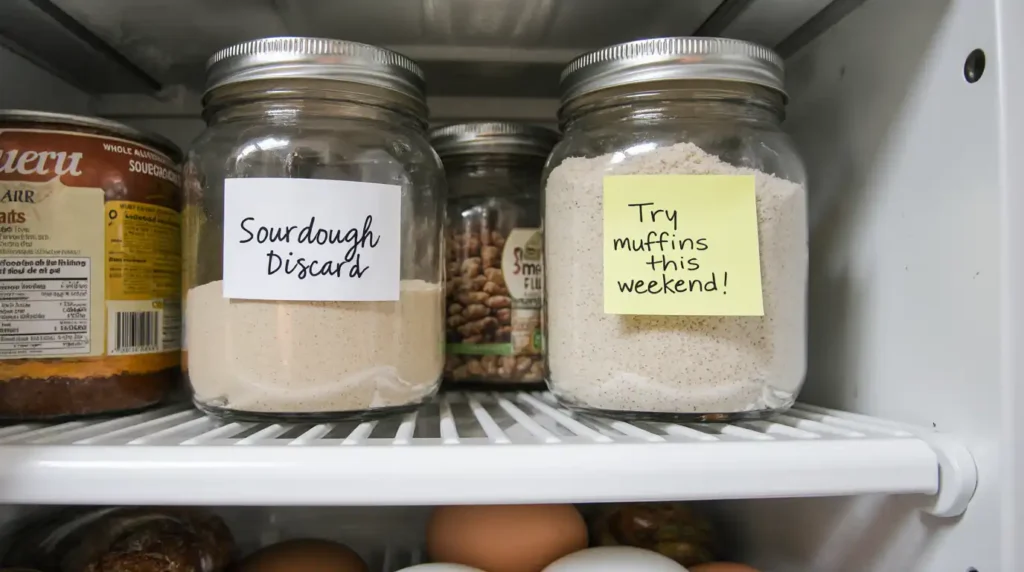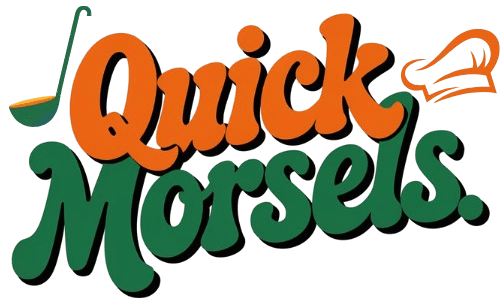Let’s be honest — sourdough baking can feel intimidating. All that talk about feeding starters, watching bubbles, timing rises… it’s enough to make you wonder if you need a degree in microbiology just to bake bread.
But here’s the thing: easy sourdough discard recipes for beginners exist. Truly. No artisan-level skills. No specialty tools. Just simple ways to use the extra starter you’d normally throw out.
I’ll admit it: when I first kept a sourdough starter, I felt weird about scraping perfectly good discard into the trash. I wasn’t even sure what it was — let alone how to use it. But once I tried my first batch of pancakes with it? I was hooked.
This guide is for you if you want to:
- Cut down on waste without overcomplicating your life
- Whip up delicious snacks or breakfasts in minutes
- Feel a little smug knowing you’re making the most of your starter
We’re going to keep it simple, approachable, and honest. Nothing fussy. Just a handful of beginner-friendly recipes that make you think, “Wait — I can do that.”
Because you absolutely can.
What Is Sourdough Discard?
If you’re new to this whole sourdough thing, you’ve probably heard people talk about “feeding their starter” like it’s a pet. Honestly? That’s not far off.
Your sourdough starter is a living culture of wild yeast and bacteria. To keep it happy and active, you have to feed it with fresh flour and water regularly. But here’s the catch: before you feed it, you need to remove some of the old starter. That removed portion? That’s your sourdough discard.
I know — “discard” sounds like trash. And that’s exactly what most people do with it at first. They scoop it out and throw it away. But the truth is, discard is still perfectly good — it just hasn’t been freshly fed.
It’s full of that classic sourdough tang and mild acidity. It’s not as strong for rising bread on its own (you’ll still need other leaveners for most recipes), but it’s incredible for adding flavor and texture to all kinds of bakes.
Here’s the real kicker: using discard isn’t just about avoiding waste (though that’s a big plus). It’s about discovering new recipes you wouldn’t even think of if you were just baking bread.
Once you realize that, it stops being “discard” and starts being ingredient.
How to Store and Use Discard
Okay — so you’ve scooped out that extra starter. Now what?
First off, don’t stress. Storing sourdough discard is shockingly easy. You don’t need anything fancy — just a clean container with a lid.
Refrigerator:
This is the most common approach. Scrape your discard into a jar or container and pop it in the fridge. It’ll slow down fermentation so you don’t have to use it immediately. I’ve kept mine for 1–2 weeks without issues.
Honestly, it’s forgiving. If you see a bit of liquid on top (called “hooch”), just stir it back in. But if it smells truly foul (think gym socks gone wrong) or you see pink streaks or mold? Be safe — toss it.
Freezer:
Not baking for a while? Freeze it. I have a small tub in the freezer where I scrape in discard whenever I feed my starter. It’ll stay good for months.
When you want to use it, thaw it overnight in the fridge or on the counter for a bit. Stir it up (it might separate slightly — totally normal) and you’re good to go.
Using Discard in Recipes:
Here’s the fun part. Discard isn’t active enough to rise bread on its own, but it’s perfect as a flavorful wet ingredient. Think of it as adding sourdough “essence” to your recipe:
- Pancakes
- Crackers
- Muffins
- Pizza dough
- Waffles
For most recipes, you just replace part of the flour and liquid with discard. It takes a bit of feel — but you’ll get it. And honestly? Half the fun is experimenting.
BTW, if you’re new, start small. Try adding discard to simple pancakes first. It’s easy, tasty, and gives you confidence to keep going.
5-Minute Sourdough Pancakes
Let’s be real — pancakes are the easiest way to feel like a sourdough pro without actually having to be one. I mean, who doesn’t love pancakes?
The first time I made these with discard, I wasn’t sure what to expect. The batter smelled kind of tangy, which freaked me out a little. But honestly? Once they hit the pan, that tang softened up and turned into this really nice flavor. Not sour, just… interesting.
Here’s how I usually wing it (because, let’s face it, baking isn’t always about measuring precisely):
- Around a cup of sourdough discard — fridge cold or room temp, whatever you have
- One egg (because eggs basically make everything better)
- Somewhere between a quarter and half a cup of milk — eyeball it, don’t stress it
- A spoonful of sugar or honey if you want some sweetness (or don’t — I’m not your mom)
- One teaspoon of baking soda — seriously, don’t skip this unless you want pancakes that are more like hockey pucks
- A pinch of salt — because salt always sneaks in and makes things better
Mix together the discard, egg, and milk until it looks like normal pancake batter. Then sprinkle in the baking soda and salt, and gently stir. You’ll see bubbles and maybe a little fizz — that’s baking soda doing its thing, so no need to panic.
Heat up a pan — non-stick or cast iron both work — and lightly grease it. Pour in the batter in whatever size pancakes you like. Flip them when bubbles start popping and the edges look cooked.
Serve with whatever you have — syrup, butter, fruit, peanut butter — no judgment here.
Honestly, these pancakes have saved more than one lazy Sunday morning for me. They’re simple, forgiving, and remind me that sourdough discard is way more useful than I ever gave it credit for.

Simple Crackers Even Kids Can Help Make
Snacks. Sometimes they feel like a battleground, right? Trying to find something that’s quick, tasty, and doesn’t involve a million ingredients or a trip to the store. Enter sourdough discard crackers.
These are seriously my go-to when I want something crunchy and homemade but don’t have hours to spare. Plus, they’re so simple even my niece (who’s seven) can help — and she loves it. Honestly, it turns snack time into a fun little project.
Here’s the super easy version I use:
- About 1 cup sourdough discard (fridge-cold is fine)
- 2 to 3 tablespoons olive oil (sometimes more, sometimes less — depends on the texture)
- A pinch of salt
- Herbs or spices to your liking (I’m a fan of rosemary and garlic powder, but you can throw in anything — chili flakes, Parmesan, whatever’s in the pantry)
Mix it all up in one bowl until it looks like a sticky dough. Sometimes I use my hands because it’s faster and less messy than a spoon (don’t tell my niece).
Then, roll it out super thin on parchment paper — thinner is better, because you want them crispy, not soft. Score with a knife or pizza cutter into squares or just break them up after baking (chaos is fun).
Bake at 325°F (about 160°C) for 20-25 minutes, until golden and crispy. Watch closely near the end — they can go from perfect to burnt pretty fast.
The best part? You get to play with flavors. Sometimes I toss in sesame seeds; other times, it’s chili flakes for a little kick. The kids love smashing the dough, sprinkling spices, and pretending they’re little bakers.
Bonus: these crackers are way better than store-bought, and you feel like you actually did something worthwhile with that discard sitting in the fridge. Win-win.

FAQ for Discard Baking
If you’re new to using sourdough discard, you probably have some questions floating around in your head. Don’t worry — I had them too. Let’s clear up the most common ones.
Can I eat sourdough discard?
Yes! It’s just flour and water that’s been fermented. If it smells pleasantly sour (like a bakery, not a garbage dump), it’s safe to use in baking. If you see mold or pink streaks, toss it out.
How long can I keep discard in the fridge?
Usually, about 1 to 2 weeks. It might develop some liquid on top (called “hooch”), which you can stir back in. But if it starts smelling off or growing mold, better to throw it away.
Can I freeze sourdough discard?
Absolutely. Freeze it in a sealed container, and it’ll keep for months. When you’re ready to use it, thaw it in the fridge or at room temperature and stir before using.
Do I need to feed my starter before using discard?
Nope. Discard is the unfed part you remove before feeding your starter. It’s less active for rising, but perfect for recipes like pancakes, crackers, and muffins where you want flavor over rise.
How do I substitute discard in recipes?
Start by replacing some of the flour and liquid with discard — usually about ¼ to ⅓ of the total flour. Since discard is acidic, adding baking soda helps neutralize it and gives fluffiness in baked goods.
Conclusion
Using sourdough discard doesn’t have to be complicated. It’s a little jar of possibility sitting right in your fridge, waiting for you to turn it into something delicious.
Whether it’s those fluffy pancakes that make your mornings better, or crunchy crackers that are perfect for snacking (and sneaking), these easy recipes prove that you don’t need fancy skills or special equipment.
Sure, there might be a few kitchen mishaps along the way — and that’s okay. Baking is as much about the process as the result.
So go ahead, give one of these recipes a try. Use up that discard. Reduce waste. Have a little fun in the kitchen. You might just surprise yourself.
Remember: sourdough discard isn’t waste. It’s your secret ingredient.

